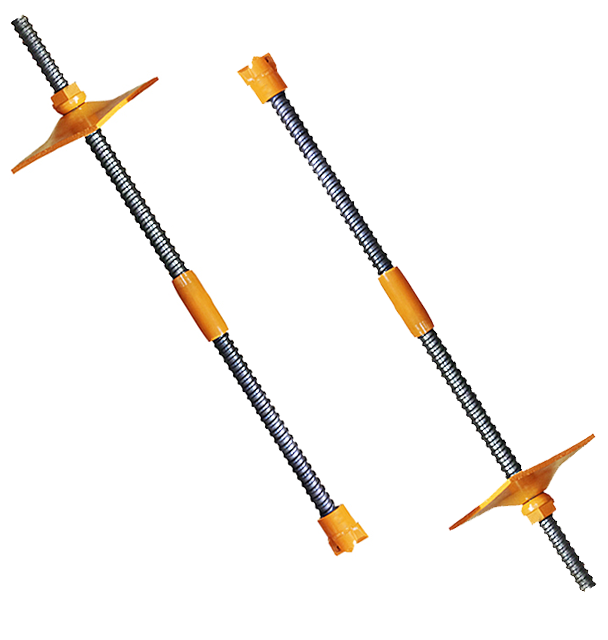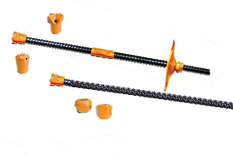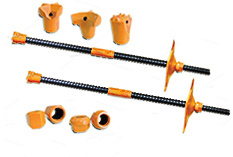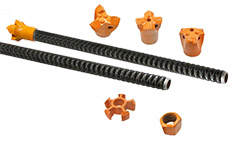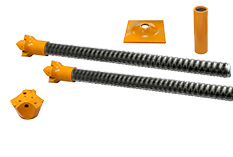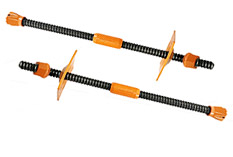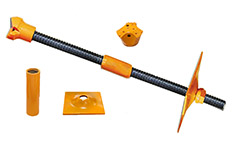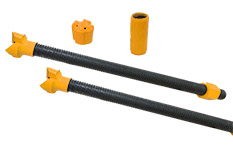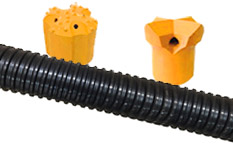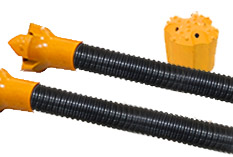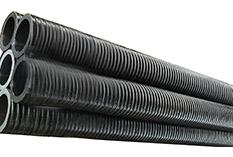Products
Home / products
quality creates safety
Self-drilling anchor
Self drilling anchor system for application in soil nailing, rock bolting, micro-pipling, tunneling, mining and infrastructure.
" Advantages of self-drilling anchor "
- Efficient Installation: Skip pre-drilling, save time.
- High Load Capacity: Reliable strength for stability
- Versatile and robust: suitable for a wide range of applications
what is SELF-DRILLING ANCHOR SYSTEM?
Self drilling anchor system is a type of ground anchor used to provide stability in soil or rock formations. The system typically consists of a hollow anchor bar with a drill bit on one end and a coupling on the other. During installation, the drill bit is used to bore a hole into the ground while simultaneously injecting grout into the hole to fill any voids. The anchor bar is then inserted into the hole and the grout is allowed to set, creating a bond between the anchor and the surrounding ground. This creates a stable foundation that can support a variety of structures and engineering projects. Self drilling anchor systems are commonly used in construction, mining, and tunneling applications.
Composition of
SELF-drilling anchor system
The self-drilling anchor system consists of several components, including the anchor bolts, couplers, drill bits, plates, nuts, and other accessories.
anchor bolt
The anchor bar is the main component of the system and serves as the load-bearing element that transfers the load from the surrounding rock to the anchorage.
anchor coupler
The coupler connects two anchor bars to extend the length of the anchor system.
anchor bit
The drill bit is used to create a borehole in the rock, and the anchor bar is installed through the borehole.
anchor plate
The plate is attached to the end of the anchor bar and is used to distribute the load across the surrounding rock mass.
anchor nut
The nut is used to secure the plate onto the anchor bar.
other accessories
Nunc eleifend sem sed leo tristique tincidunt. Phasellus aliquam magna nisl.
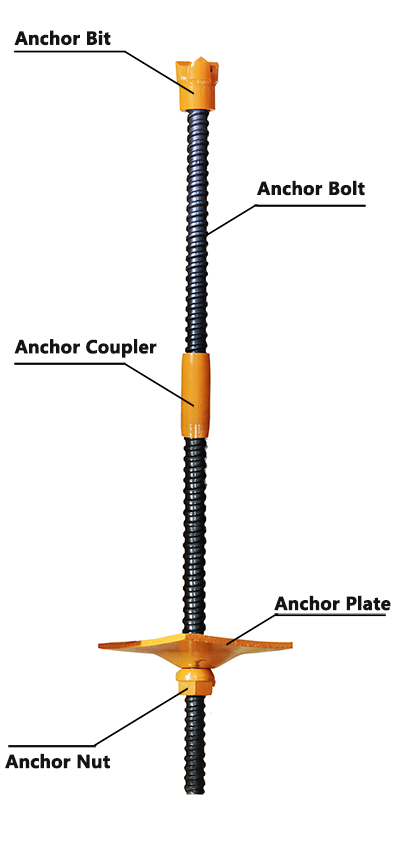
What make SINODRILLS Self-drilling anchor system safe ?
1.Precise dimensions
2.High strength combines with high toughness
3.Qualified system load
4.Consistent quality
5.Strict quality control procedures
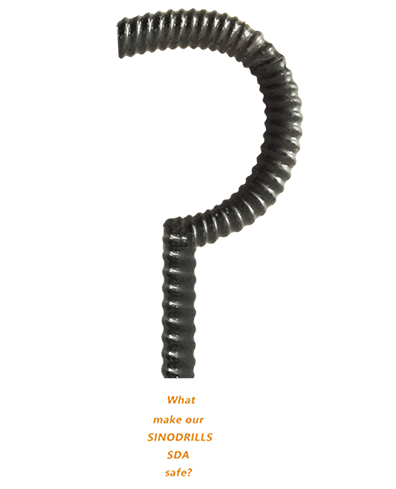
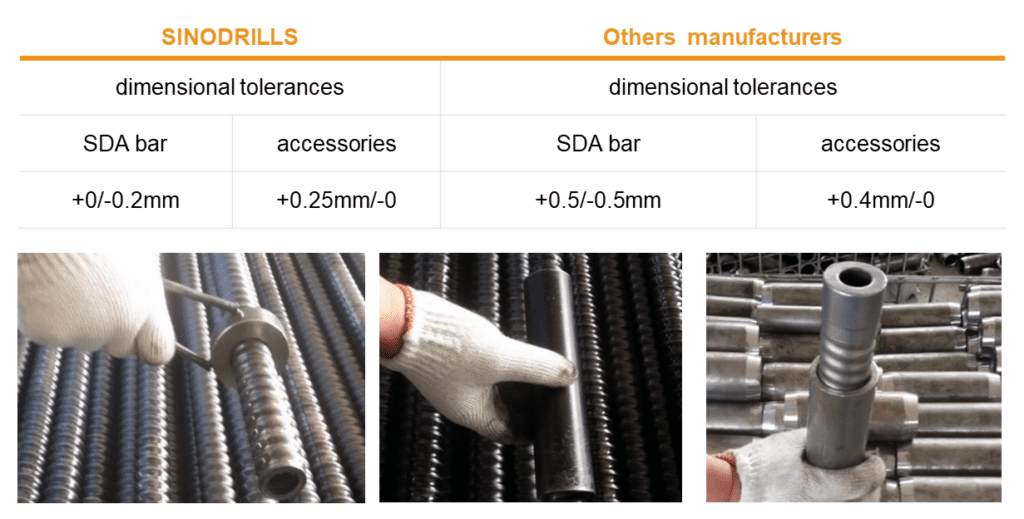
Precise dimensions
Precise dimensions are key to guarantee qualified system tensile.
1. All SINODRILLS SDA products strictly conform to international ISO threads standards, including ISO 10208, ISO 1720, etc.;
2. Small tolerances guarantee perfect SDA assembly (anchor bar + coupler + nut +plate)
High strength combines with high toughness
Toughness is a measure of the ability of a material to absorb energy up to fracture. A material that experiences very little or no plastic deformation upon fracture is termed brittle. The value of Agt can denote the toughness . For the sake of safety, the minimum number of 5% Agt is required for all finished SDA bars.
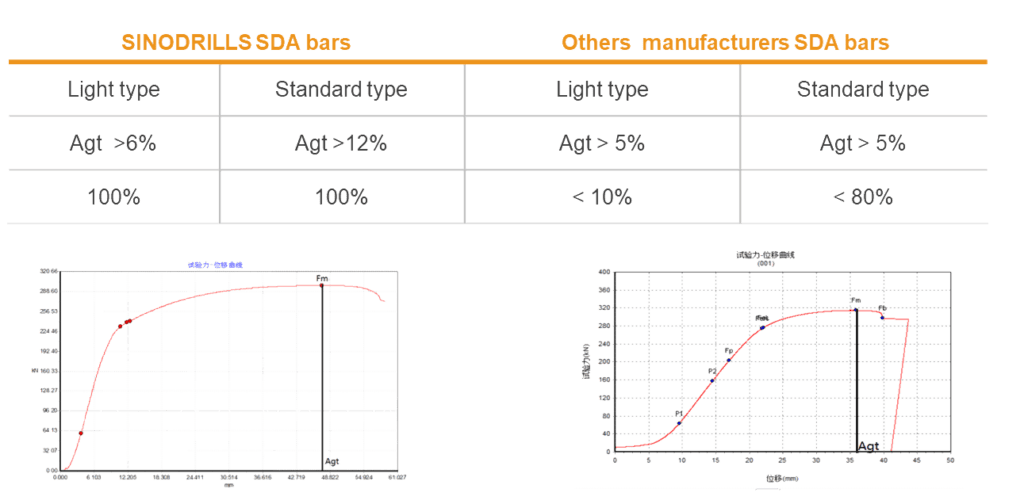

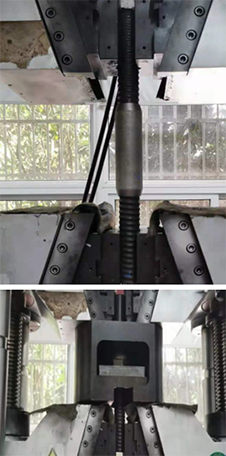
Qualified system load
Qualified system load is the only one criteria for SDA products. We assure you of 100% qualification for all SDA products.
System tensile test means the test for the assembly of anchor bars+ coupler+ nuts+ plates.
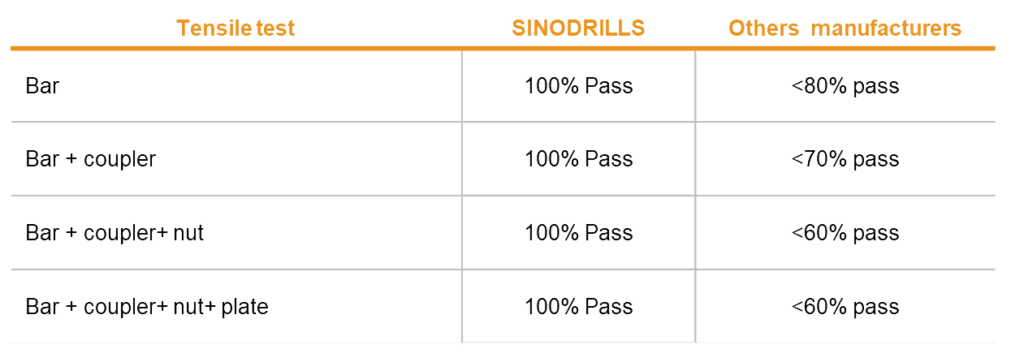
Consistent quality
Quality consistency is extremely important for all structural system. Owing to selected raw materials and fully automatic production lines, we take pride in our consistent quality.
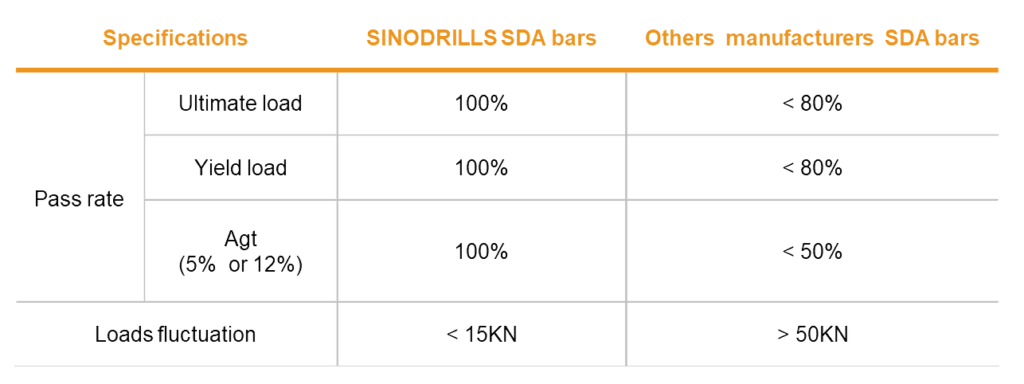
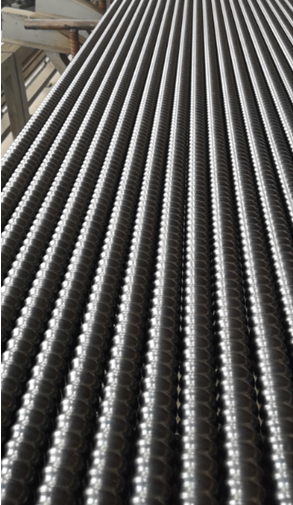

Advantages of Self-drilling anchor system
Features of our self-drilling anchor system include quick installation through combining drilling, insertion, and grouting in a single operation, along with low-noise percussion drilling. The system eliminates the need for separate installations and casing/rod removal, as the drill bit remains in the ground as a spacer. Different drill bits are available for diverse ground conditions, and the same installation principle applies to all systems and ground conditions. Our hollow core anchor rod also flushes the borehole with air/water during drilling, grouts voids, and carries out high-pressure injections in the annular space. We offer a variety of high-quality grouts and mixers, and our couplers provide flexibility in length. Our system is compatible with small drill rigs and narrow spaces. We also provide enhanced corrosion protection and maintain a high standard of quality assurance throughout the production and installation of our injection anchors/piles.
Field of application
Nailing & Bolting for tunnels, slope stabilization, rock- and soil protection.
Micro Injection Piling for increasing of foundation capacity or settlement control on existing structures, pipeline and OHTL foundations, root piles for tunnels, sound barriers.
Ground Anchors for retaining walls, against buoyancy, avalanche protection, redevelopment of embankments.

How to use self-drilling anchor system
1. Drilling the anchor bar to the designed depth
Marking the position for installing anchor bar.
Connecting the anchor bar to jack-leg rock drill or drill rig which is usually used for long or big diameter anchor bar. The operator need to check the anchor bar and have to clear it if there is something clogged in it so that to make sure the grouting is smoothly.
Starting drilling and stop drilling once the anchor bar reached the designed depth, then clear the hole by pressure water or pressure air. It is necessary to remain 10~15cm of length anchor bar outside of hole.
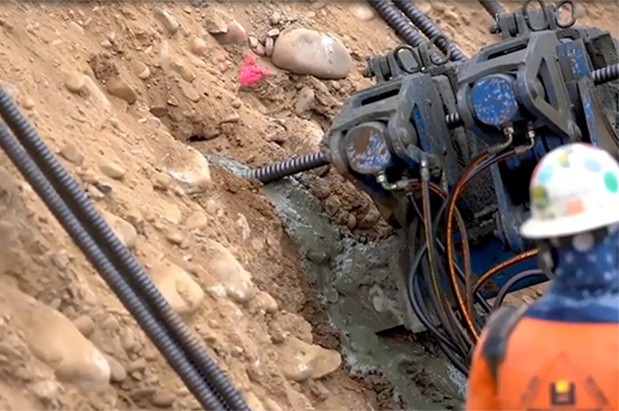

2.Grouting
Removing the drill rig from the anchor bar once it is reached designed depth, and immediately connecting the anchor bar with grouting adapter and grouting pump.
Launch the grouting pump and start grouting. Stopping grouting when the cement just flows out of the hole or the Pressure gauge indicates the pressure is reached the designed requirement.
Removing the grouting adapter from anchor bar and install the grouting stopper immediately as soon as the grouting is finished. The grouting stopper must be inserted in the hole no less than 25cm to assure the cement won’t revealed.
3. Install the plate and nuts
The process for installing the anchor bar involves several steps. First, the plate and nuts are installed. It is important to inspect the plate and nuts to ensure they are installed correctly. Once the plate and nuts are secure, the concrete pier is poured to anchor the bar that is exposed outside. This process ensures that the anchor bar is firmly in place and able to withstand the intended load.



